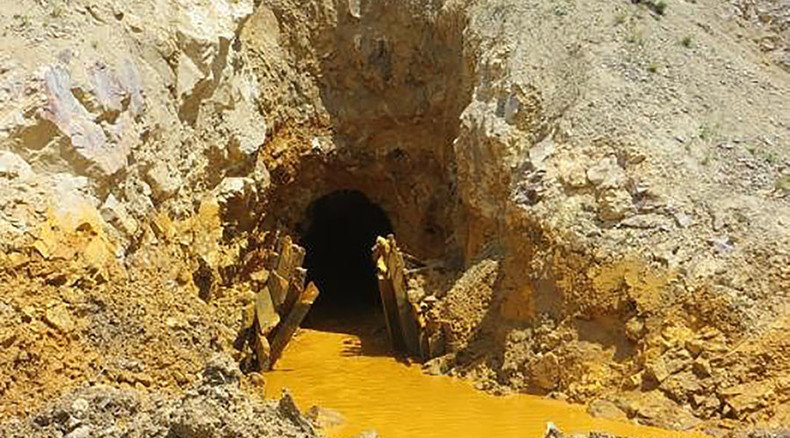EPA caused the Colorado gold mine spill, government investigators report

An investigation by the Department of the Interior found that the Environmental Protection Agency was solely to blame for the toxic mustard-colored waters that contaminated rivers in Colorado, Utah, New Mexico, and the Navajo Nation in August.
The EPA had claimed that the August 5 spill near Silverton, Colorado was “likely inevitable,” but research carried out by the Interior’s Bureau of Reclamation disagreed. The spill released arsenic, mercury, lead and other contaminants into the Animas River and thousands of drinking water wells as far as 100 miles away, creating a natural disaster.
Hasty operations by the EPA were the sole cause, the Interior report concluded. The Gold King Mine burst because the EPA had neglected to check its water levels before excavating the already weakened, oozing mine entrance. Though the EPA had acknowledged some risk of a blowout in June 2014, the dangers had been building for decades. Despite the fact that mining companies had redirected water flow through the cavernous mines, causing it to build up, Interior officials say the spill could have still been avoided if the EPA had done its due diligence.
EPA dismissed hundreds of environmental discrimination claims – investigation [VIDEO] https://t.co/SZRnZdW8Eq@Brigida__Santos
— RT America (@RT_America) October 13, 2015“This error resulted in development of a plan to open the mine in a manner that appeared to guard against blowout, but instead led directly to the failure,” Interior engineers reported.
The EPA’s cleanup crew hadn’t used a drilling rig machine to gouge the mine from above, so they couldn’t have had a reliable sense of how dangerous the rupture was going to be, the report said. As a result, three million gallons of toxic contaminants damaged waterways essential as sources of drinking water and crop irrigation.
The EPA originally claimed only one million gallons of the mine’s poisonous contents had leaked into the river. New Mexico and other affected state agencies say they received no timely notice from the EPA following the spill.
Colorado mine spill three times worse than first reported - EPA http://t.co/LOgP16umhdhttp://t.co/hx9tRGhpFG
— RT America (@RT_America) August 11, 2015Richard Olsen, senior geotechnical engineer for the US Army Corps of Engineers, reviewed the Interior’s inquiry and shared his own “serious reservations” as part of the report. Olsen wasn’t satisfied with the EPA’s explanation of how communications failed or why there was an “urgency to start digging” in the face of the complex engineering required for such a project. The insistence of getting on with the cleanup effort came from a newly appointed EPA field coordinator, despite another EPA official’s concerns.
While Olsen’s doubts certainly do not rise to the level of conspiracy theorizing, they are reminiscent of questions asked by some experts in the immediate aftermath of the disaster, especially following the revelation that a retired geologist had “predicted” such a spill less than a week before the Gold King Mine event.
Published July 30 in The Silverton Standard & The Miner local newspaper, Dave Taylor’s letter to the editor said, “It appears to me that the EPA is setting your town and the area up for a possible Superfund blitzkrieg,” referring to a status that allocates trust funds to clean up emergency contamination sites.
Colorado mine owner accuses the EPA of lying in Capitol hearing [VIDEO] https://t.co/jdBCzfsDip@anyaparampil
— RT America (@RT_America) September 12, 2015A Rasmussen poll showed 51 percent of Americans wanted the EPA employees responsible for the leak to be fired, with 35 percent saying they should be officially admonished. The Interior report recommends neither, however, finding no malfeasance. The report claims the EPA is operating with inadequate facts, figures, and funds. It also states the EPA and various other government agencies, which have differing standards, are incapable of determining the true risks involved in cleaning up the hundreds of thousands of spent mines in need of attention. Taken together, it is estimated that the total cost of this could potentially reach more than $50 billion.
An investigation into the toxic spill being conducted by the EPA Inspector General’s Office remains ongoing.












